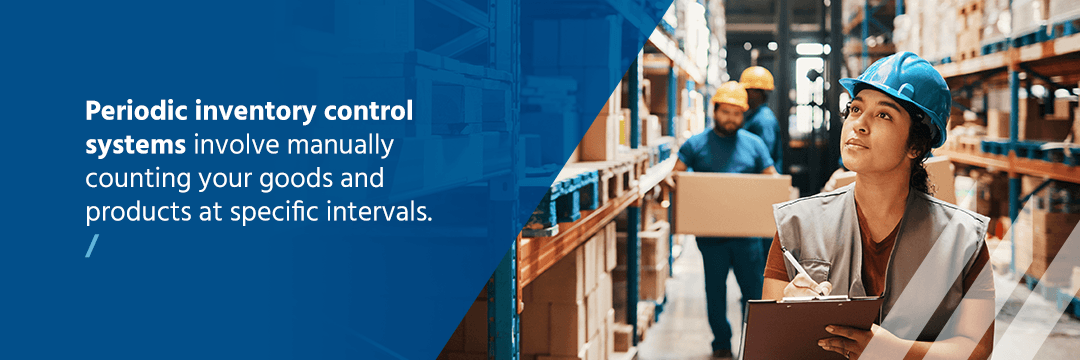Inventory Control Systems
Inventory management involves the organization of inventory to ensure a business's supply chain functions smoothly. From warehousing to shipping and receiving, effective inventory management is crucial for keeping all inventory processes moving as intended. While past inventory management techniques included a pen and paper, manual tracking is too slow and inaccurate for today's business needs. To make inventory control management easier, faster and more accurate, businesses began using automated inventory control systems.
Inventory control systems are technological solutions that help businesses track their stock and inventory to ensure they have the products to fulfill customer needs as they arise. These systems provide your business with an accurate count and location of inventory, and they can help you determine when to reorder products so stock levels are never too high or low. By integrating each step in the process from purchasing to returns, a single control system can help you manage every aspect of your inventory.
Types of Inventory Control Systems
There are two main types of inventory control systems — periodic and perpetual. The type of system you use for your business will likely depend on the products you offer and the frequency with which they're bought and sold. Compare the two here to help you determine which type of system might work best for your business:


Periodic Inventory Control Systems
Periodic inventory control systems involve manually counting your goods and products at specific intervals. With this method, your stock count is only updated after you or your employees complete a physical count of your entire inventory. Because this can be extremely time- and resource-consuming for large businesses with extensive inventories, periodic control systems tend to be more effective for smaller businesses or stores.
One of the issues many businesses have with periodic control systems is having outdated stock counts as time passes and orders are filled. Because inventory is constantly changing, you'll have to physically check your stock before making a sale.
Perpetual Inventory Control Systems
Perpetual inventory control systems create a database of your inventory using barcodes and scanners. When products are received or sold, they're scanned and either added or removed from the database. This method allows businesses to keep an accurate and consistently up-to-date inventory count. With a perpetual inventory system, you'll eliminate the need for manual inventory counts and will be able to easily check your stock levels. This type of system is often required of large businesses and warehouses.
How to Control Inventory
With continued technological advancement, there are now more ways to use inventory control management across various businesses. Many inventory control systems have built-in features that help make inventory management easier.
Materials Requirements Planning
Materials requirements planning, or MRP, builds upon the concepts of inventory control systems by extending the time frame of consideration from keeping track of what you have in the present to planning what you can manufacture or have available to sell in the future. The MRP sets forth what resources you need to order and when, and what sales orders you can release and when.
Finale is a basic inventory control system for manufacturers without materials requirements planning built in. Small to medium-sized manufacturers may find MRP software overbearing for the complexity of their actual planning needs. The combination of Finale as an inventory control system plus Excel for MRP is the right level of tools for a large class of companies.
For simple manufacturing applications, Finale makes it quick and simple to create finished products by using the Builds. Finale Inventory's Build module extends the end-to-end processes with specialized capabilities for manufacturers who need to assemble products or perform basic manufacturing activities to fulfill orders. This feature is ideal for customers who need a more straightforward way to track finished goods without the complexity of a full-blown ERP system.
Within Finale, you will create Bills of Materials (BOMs), which will track the inventory items needed to build completed goods. A bill of materials is simply a very specific shopping list that tells somebody elsewhere in the company exactly what to purchase and how much.
Lots and Serial Numbers
Some types of products have expiry dates, or serial numbers, or other properties identified by lot or batch for traceability of the builds. Thus stock may not just be quantities of a particular product, but of a particular lot. For these types of products, the stock item in the block diagram above encompasses the properties of the particular stock item instances that vary from batch to batch or item to item.


Find out How Finale Inventory Can Help You
To learn more about our cloud inventory management, please check out our video tour to get more insight and determine if Finale may be good fit for your application. Feel free to contact us with any questions or to request a free trial.
Here are a few example videos of Finale Inventory in use.




